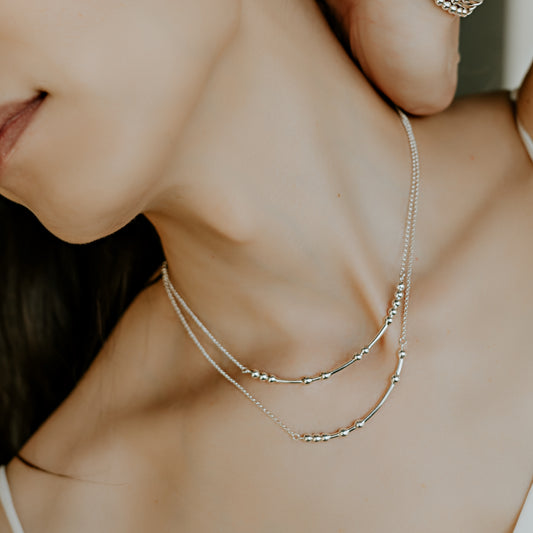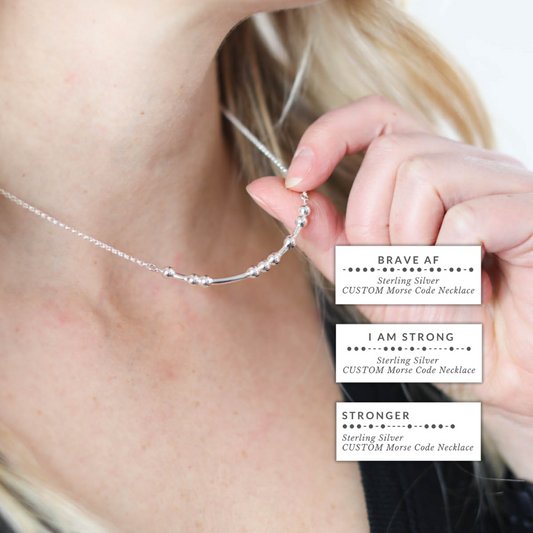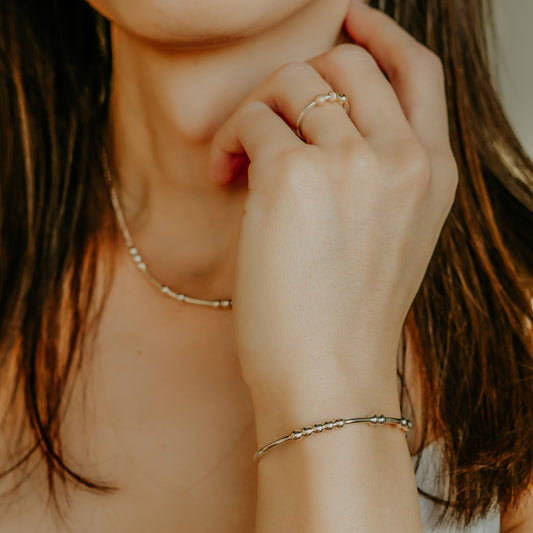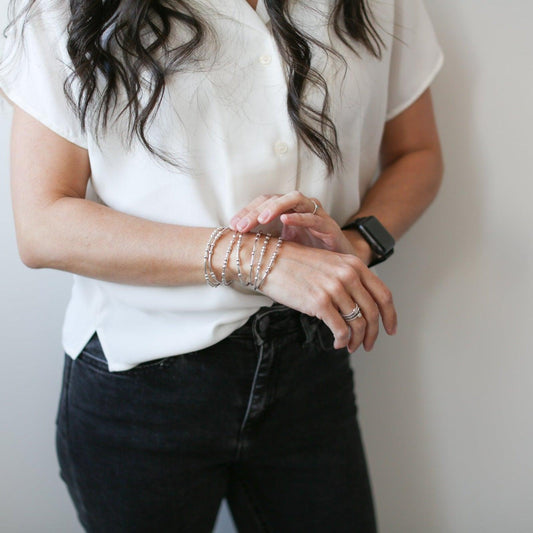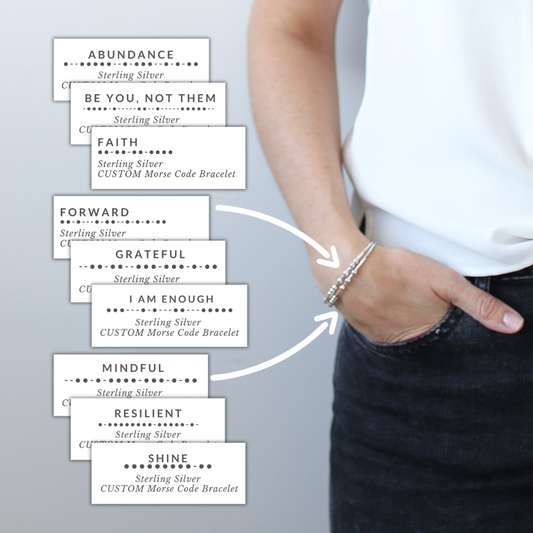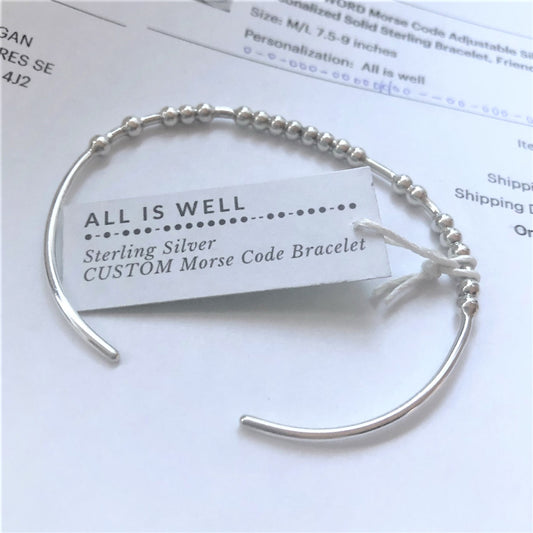Silver has been adorning jewelry for centuries with its mesmerizing sheen and timeless elegance. Its versatility, durability, and affordability make it a cherished choice among jewelry enthusiasts worldwide. However, not all silver is created equal. In this blog post, I will explore the various types of silver used in jewelry-making, shedding light on their distinct qualities and characteristics. Join me on this captivating journey into the shimmering world of silver.
Sterling Silver: The Epitome of Purity and Durability
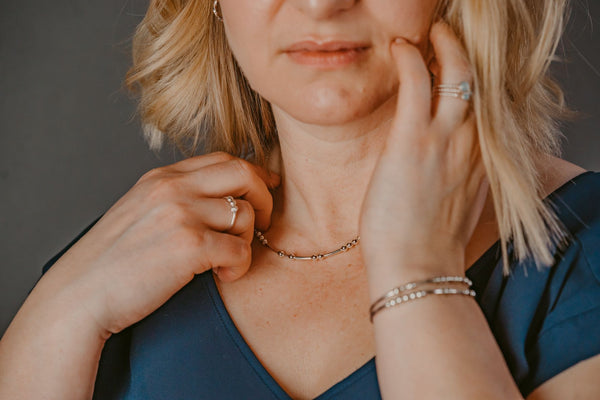
When it comes to silver jewelry, sterling silver is often the go-to choice for both designers and consumers. Sterling silver consists of 92.5% pure silver, blended with 7.5% of other metals, usually copper. This alloy enhances the metal's strength and durability, ensuring that the jewelry withstands daily wear.
The "925" stamp is the sterling silver's hallmark, indicating its purity. Jewelry crafted from sterling silver is not only visually stunning but also tarnish-resistant, making it a popular choice for a wide range of designs, from delicate necklaces to intricate earrings.
Fine Silver: Embracing Pure Opulence

Fine silver might be the perfect choice if you're seeking unparalleled elegance. Composed of 99.9% pure silver, this type of silver exhibits a radiant, white luster that captures the eye. Fine silver is typically used for handcrafted artisan jewelry, where intricate details and unique designs take center stage.
While fine silver offers unmatched beauty, it is softer than sterling silver, making it more prone to scratches and dents. Jewelry made from fine silver requires gentle care to maintain its pristine appearance. It is useful for several elements and techniques like bezels for stone setting and it is the perfect metal in enameling.
Silver Plating & Silver Filled: An Affordable Gleam
Silver-plated jewelry offers an affordable option for those looking to enjoy the aesthetic appeal of silver on a budget. In this process, a thin layer of silver is applied to a base metal, such as copper or brass, through electroplating. The result is a gleaming surface that mimics the look of pure silver.
While silver-plated jewelry can be an excellent choice for occasional wear, it is worth noting that the plating can wear off over time, revealing the base metal beneath. Regular maintenance and careful handling are essential to preserve the silver coating.
I would like to introduce silver-filled wire. It is fairly new to the Jewellery community and I have not used this product. It is marketed to jewelers and hobbyists who make wire-wrapped pieces. The Silver-Filled wire is similar to silver plating over a base metal but the layer of silver deposited on the base metal wire is much thicker. The silver should make up for 5-10% of the overall wire.
Rhodium-Plated Silver: A Touch of Luxury
Rhodium plating is a technique that involves depositing a thin layer of rhodium, a precious metal from the platinum family, onto the surface of silver jewelry. This process enhances the luster, durability, and scratch resistance of the jewelry while providing a bright white finish.
Rhodium-plated silver jewelry exudes a luxurious appeal, resembling the appearance of white gold or platinum. The rhodium layer also offers additional protection against tarnish and scratches, ensuring a long-lasting shine.
Argentium Silver: The Tarnish-Resistant Marvel
Argentium silver is a modern variation of sterling silver that contains a small percentage of germanium. This addition enhances the metal's natural properties, resulting in a unique blend of durability, tarnish resistance, and low maintenance. Jewelry made from Argentium silver exhibits a brilliant shine while requiring minimal polishing to retain its luster.
The tarnish-resistant qualities of Argentium silver make it an excellent choice for everyday jewelry, as it reduces the need for frequent cleaning and maintenance.
Reticulated Silver: A Textured Masterpiece

Reticulated silver is a fascinating type of silver that undergoes a unique heating and cooling process to create a textured surface resembling waves, ridges, or other intriguing patterns. This technique involves controlled oxidation, resulting in an eye-catching and distinctive appearance.
Jewelry crafted from reticulated silver showcases an artistic flair, making it a popular choice for statement pieces. The textured surface adds depth and visual interest to rings, bracelets, and pendants.
From the enduring elegance of sterling silver to the opulent allure of fine silver and the budget-friendly charm of silver-plated jewelry, the world of silver offers a wide range of options to suit every taste and budget. Each type of silver brings its own unique qualities, ensuring that jewelry enthusiasts can find the perfect piece to express their individual style.
Whether you opt for the strength and tarnish resistance of sterling silver or the pure opulence of fine silver, silver jewelry continues to captivate with its timeless beauty. Understanding the different types of silver used in jewelry empowers you to make an informed choice that aligns with your preferences and lifestyle. So go ahead, embrace the shimmering world of silver, and adorn yourself with a piece that reflects your personal elegance. There are 5 types of silver used in Jewelry. Fine Silver, Sterling Silver, Reticulated Silver, Plated Silver, and Silver Filled.


